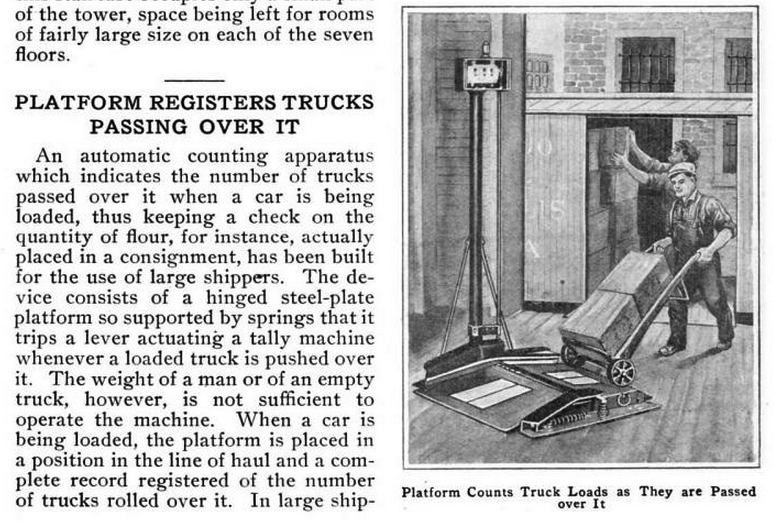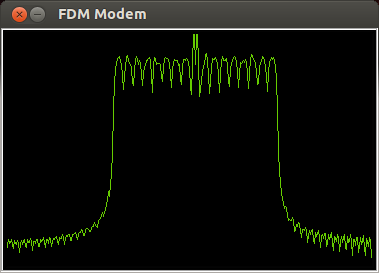|
SCPC
Single channel per carrier (SCPC) refers to using a single signal at a given frequency and bandwidth. Most often, this is used on broadcast satellites to indicate that radio stations are not multiplexed as subcarriers onto a single video carrier, but instead independently share a transponder. It may also be used on other communications satellites, or occasionally on non-satellite transmissions. In an SCPC system, satellite bandwidth is dedicated to a single source. This makes sense if it is being used for something like satellite radio, which broadcasts continuously. Another very common application is voice, where a small amount of fixed bandwidth is required. However, it does not make sense for burst transmissions like satellite internet access or telemetry, since a customer would have to pay for the satellite bandwidth even when they were not using it. Where multiple access is concerned, SCPC is essentially FDMA. Some applications use SCPC instead of TDMA, because ... [...More Info...] [...Related Items...] OR: [Wikipedia] [Google] [Baidu] |
Transponder
In telecommunications, a transponder is a device that, upon receiving a signal, emits a different signal in response. The term is a blend of ''transmitter'' and ''responder''. In air navigation or radio frequency identification, a flight transponder is an automated transceiver in an aircraft that emits a coded identifying signal in response to an interrogating received signal. In a communications satellite, a satellite transponder receives signals over a range of uplink frequencies, usually from a satellite ground station; the transponder amplifies them, and re-transmits them on a different set of downlink frequencies to receivers on Earth, often without changing the content of the received signal or signals. Satellite/broadcast communications A communications satellite’s channels are called transponders because each is a separate transceiver or repeater. With digital video data compression and multiplexing, several video and audio channels may travel through a single tr ... [...More Info...] [...Related Items...] OR: [Wikipedia] [Google] [Baidu] |
Satellite Internet
Satellite Internet access is Internet access provided through communication satellites; if it can sustain high speeds, it is termed satellite broadband. Modern consumer grade satellite Internet service is typically provided to individual users through geostationary satellites that can offer relatively high data speeds, with newer satellites using the to achieve downstream data speeds up to 506 Mbit/s. In addition, new satellite internet constellations are being developed in low-earth orbit to enable low-latency internet access from space. History Following the launch of the first satellite, Sputnik 1, by the Soviet Union in October 1957, the US successfully launched the Explorer 1 satellite in 1958. The first commercial communications satellite was Telstar 1, built by Bell Labs and launched in July 1962. The idea of a geosynchronous satellite—one that could orbit the Earth above the equator and remain fixed by following the Earth's rotation—was first propos ... [...More Info...] [...Related Items...] OR: [Wikipedia] [Google] [Baidu] |
Frequency-division Multiple Access
Frequency-division multiple access (FDMA) is a channel access method used in some multiple-access protocols. FDMA allows multiple users to send data through a single communication channel, such as a coaxial cable or microwave beam, by dividing the bandwidth of the channel into separate non-overlapping frequency sub-channels and allocating each sub-channel to a separate user. Users can send data through a subchannel by modulating it on a carrier wave at the subchannel's frequency. It is used in satellite communication systems and telephone trunklines. FDMA splits the total bandwidth into multiple channels. Each ground station on the earth is allocated a particular frequency group (or a range of frequencies). Within each group, the ground station can allocate different frequencies to individual channels, which are used by different stations connected to that ground station. Before the transmission begins, the transmitting ground station looks for an empty channel within the fr ... [...More Info...] [...Related Items...] OR: [Wikipedia] [Google] [Baidu] |
Telemetry
Telemetry is the in situ collection of measurements or other data at remote points and their automatic transmission to receiving equipment (telecommunication) for monitoring. The word is derived from the Greek roots ''tele'', 'far off', and ''metron'', 'measure'. Systems that need external instructions and data to operate require the counterpart of telemetry: telecommand. Although the term commonly refers to wireless data transfer mechanisms (e.g., using radio, ultrasonic, or infrared systems), it also encompasses data transferred over other media such as a telephone or computer network, optical link or other wired communications like power line carriers. Many modern telemetry systems take advantage of the low cost and ubiquity of GSM networks by using SMS to receive and transmit telemetry data. A ''telemeter'' is a physical device used in telemetry. It consists of a sensor, a transmission path, and a display, recording, or control device. Electronic devices are widely u ... [...More Info...] [...Related Items...] OR: [Wikipedia] [Google] [Baidu] |
Digital Television
Digital television (DTV) is the transmission of television signals using Digital signal, digital encoding, in contrast to the earlier analog television technology which used analog signals. At the time of its development it was considered an innovative advancement and represented the first significant evolution in television technology since color television in the 1950s. Modern digital television is transmitted in high-definition television (HDTV) with greater resolution than analog TV. It typically uses a widescreen aspect ratio (commonly 16:9) in contrast to the narrower format (4:3) of analog TV. It makes more economical use of scarce radio spectrum space; it can transmit up to seven channels in the same Bandwidth (signal processing), bandwidth as a single analog channel, and provides many new features that analog television cannot. A digital television transition, transition from analog to digital broadcasting began around 2000. Different digital television broadcasting st ... [...More Info...] [...Related Items...] OR: [Wikipedia] [Google] [Baidu] |
Digital Radio
Digital radio is the use of digital technology to transmit or receive across the radio spectrum. Digital transmission by radio waves includes digital broadcasting, and especially digital audio radio services. This should not be confused with Internet radio which also is digital but not transmitted by radio waves in the radio spectrum. Types In digital broadcasting systems, the analog audio signal is digitized, compressed using an audio coding format such as AAC+ ( MDCT) or MP2, and transmitted using a digital modulation scheme. The aim is to increase the number of radio programs in a given spectrum, to improve the audio quality, to eliminate fading problems in mobile environments, to allow additional datacasting services, and to decrease the transmission power or the number of transmitters required to cover a region. However, analog radio (AM and FM) is still more popular and listening to radio over IP (Internet Protocol) is growing in popularity. In 2012, four dig ... [...More Info...] [...Related Items...] OR: [Wikipedia] [Google] [Baidu] |
Television Network
A television broadcaster or television network is a telecommunications network for the distribution of television show, television content, where a central operation provides programming to many television stations, pay television providers or, in the United States, Multichannel television in the United States, multichannel video programming distributors. Until the mid-1980s, broadcast programming on television in most countries of the world was dominated by a small number of broadcast network, terrestrial networks. Many early television networks such as the BBC, Canadian Broadcasting Corporation, CBC, PBS, People's Television Network, PTV, NBC or ABC American Broadcasting Company, in the US and Australian Broadcasting Corporation, in Australia evolved from earlier radio networks. Overview In countries where most networks broadcast identical, centrally originated content to all of their stations, and where most individual television transmitters therefore operate only as large ... [...More Info...] [...Related Items...] OR: [Wikipedia] [Google] [Baidu] |
Piggybacking (data Transmission)
Piggyback, piggy-back, or piggybacking may mean: Transport * Piggyback (transportation), something that is riding on the back of something else Art, entertainment, and media *Splash cymbal piggybacking, mounting a cymbal on top of an already stand-mounted cymbal *Piggyback (song), "Piggyback" (song), 2017 song by Melanie Martinez *Chapter Nine: The Piggyback, 2022 episode of ''Stranger Things''. Business, finance, and law * Piggy-back (law), shareholder selling rights * Piggybacking, a practice in which a person with bad credit uses the seasoned tradeline of credit of someone else Electronics * Piggyback board, a daughterboard * Piggyback microcontroller, a microcontroller variant with EPROM socket Healthcare * Piggybacking, a second infusion set onto the same intravenous line using a Y-Set (intravenous therapy) * "Liver transplantation#Technique, Piggy-back technique", is a technique in liver transplantation in which the recipient inferior vena cava is preserved. * Visio ... [...More Info...] [...Related Items...] OR: [Wikipedia] [Google] [Baidu] |
Radio Network
There are two types of radio network currently in use around the world: the one-to-many (simplex communication) broadcast network commonly used for public information and mass media, mass-media entertainment, and the two-way radio (Duplex (telecommunications), duplex communication) type used more commonly for public safety and public services such as police, fire, taxicabs, and delivery services. Cell phones are able to send and receive simultaneously by using two different frequencies at the same time. Many of the same components and much of the same basic technology applies to all three. The two-way type of radio network shares many of the same technologies and components as the broadcast-type radio network but is generally set up with fixed broadcast points (transmitters) with co-located receivers and mobile receivers/transmitters or transceivers. In this way both the fixed and mobile radio units can communicate with each other over broad geographic regions ranging in size from ... [...More Info...] [...Related Items...] OR: [Wikipedia] [Google] [Baidu] |
Retronym
A retronym is a newer name for something that differentiates it from something else that is newer, similar, or seen in everyday life; thus, avoiding confusion between the two. Etymology The term ''retronym'', a neologism composed of the combining forms '' retro-'' (from Latin , "before") + '' -nym'' (from Greek , "name"), was coined by Frank Mankiewicz in 1980 and popularized by William Safire in '' The New York Times Magazine''. In 2000, '' The American Heritage Dictionary'' (4th edition) became the first major dictionary to include the word ''retronym''. Examples The global war from 1914 to 1918 was referred to at the time as the ''Great War''. However, after the subsequent global war erupted in 1939, the phrase ''Great War'' was gradually deprecated. The first came to be known as ''World War I'' and the second as ''World War II''. The first bicycles with two wheels of equal size were called " safety bicycles" because they were easier to handle than the then-dominant ... [...More Info...] [...Related Items...] OR: [Wikipedia] [Google] [Baidu] |
Frequency-division Multiplexing
In telecommunications, frequency-division multiplexing (FDM) is a technique by which the total bandwidth (signal processing), bandwidth available in a communication channel, communication medium is divided into a series of non-overlapping frequency bands, each of which is used to carry a separate signal. This allows a single transmission medium such as a microwave radio link, cable or optical fiber to be shared by multiple independent signals. Another use is to carry separate serial bits or segments of a higher rate signal in Parallel communication, parallel. The most common example of frequency-division multiplexing is radio and television broadcasting, in which multiple radio signals at different frequencies pass through the air at the same time. Another example is cable television, in which many television channels are carried simultaneously on a single cable. FDM is also used by telephone systems to transmit multiple telephone calls through high capacity trunklines, communi ... [...More Info...] [...Related Items...] OR: [Wikipedia] [Google] [Baidu] |






